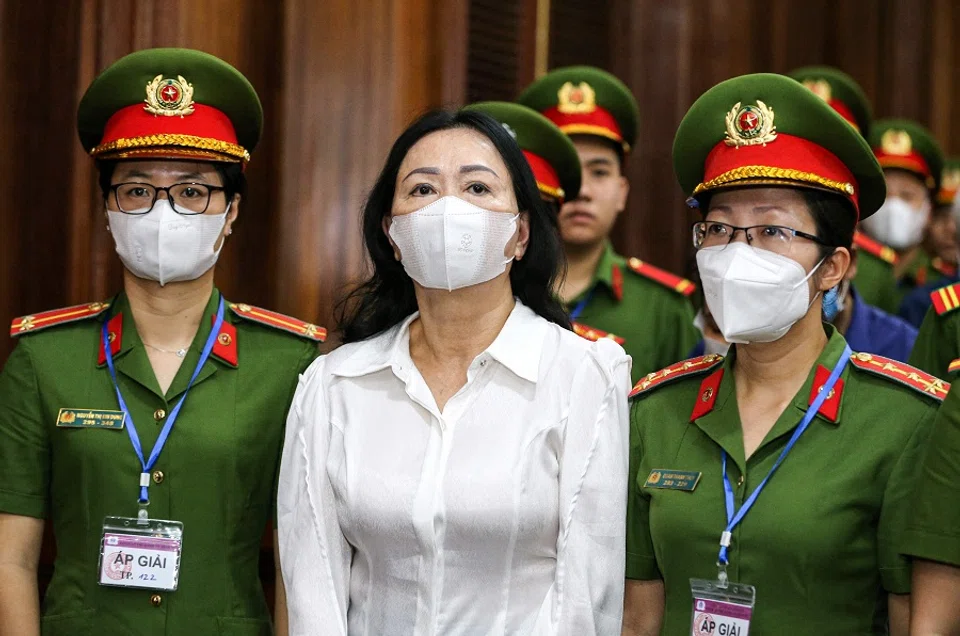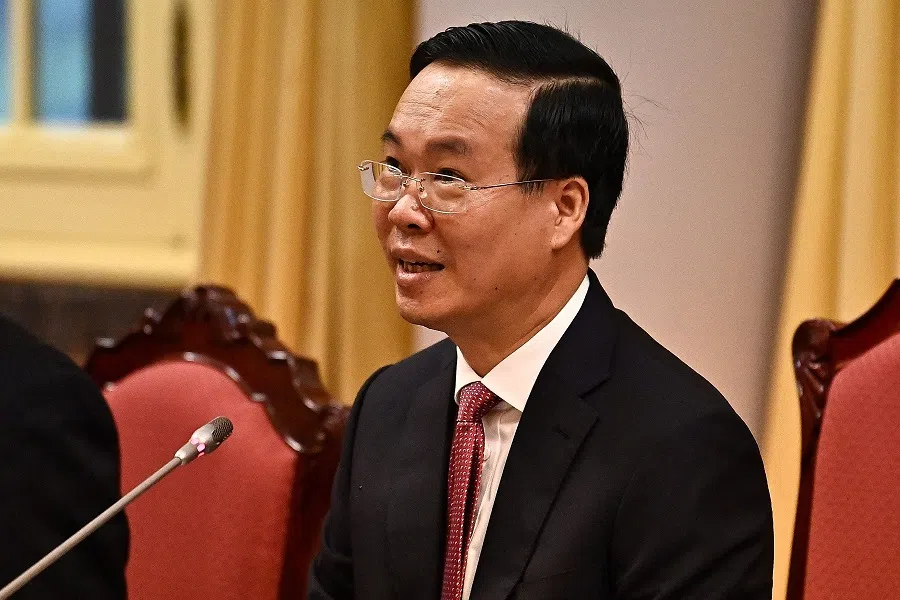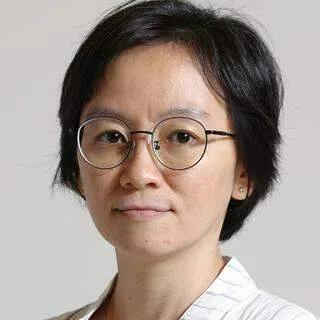[Big read] The Communist Party of Vietnam’s struggle against corruption
An uproar broke out after Truong My Lan, Vietnam’s richest female tycoon, was found guilty of the biggest fraud and money-laundering case in the country, and sentenced to death. The case goes beyond white-collar crime and it pushed Vietnam’s anti-corruption campaign to a crescendo as collusion between business and government, political factions, and power struggles in the country were all exposed.

In 2012, Truong My Lan, the chairwoman of Van Thinh Phat, a Vietnamese property developer, received help from the government to consolidate three smaller banks that were running low on cash into the Saigon Commercial Bank (SCB). While this provided extra impetus to the business empire of the legendary Lan, it also paved the way for her subsequent descent into jail.
Under Vietnamese law, no one is allowed to hold more than 5% of a bank’s shares, but through her close associates and shell companies, Lan controlled 91.5% of SCB’s shares. She secured massive loans from the bank through over-declaring the value of collaterals and fraudulent business plans, causing it to suffer losses in excess of 677 trillion dong (US$27 billion).
On many occasions, she also bribed her way through government audits and to cover up detected misdoings. For instance, Do Thi Nhan, who was in charge of the State Bank of Vietnam Banking Inspection and Supervision Department II, received US$5.2 million in bribes from her.
Lan, whose ancestry can be traced to Guangdong, China, used to live in Ho Chi Minh City District 5 where those of Chinese ethnicity congregate.
Lan’s arrest was seen as a major victory for Vietnam’s anti-corruption efforts. A Singaporean businessman who has been doing business in Vietnam for over four decades told Lianhe Zaobao that while Lan’s case revealed many weaknesses within Vietnam’s political system, it also signals the government’s determination to eradicate corruption.
Mr Lim, 73, who asked to stay anonymous, said that given the country’s youthful and educated populace together with its pro-business government, Vietnam will become an investment destination with immense potential after its current unrest subsides.
However, Lan’s case goes far beyond white-collar crime and is part of an intricate web of business-government collusion and struggle for political power, so there remain doubters about the good that her high-profile trial can produce. Zachary Abuza, a professor in Southeast Asian politics at the National War College in Washington, told CNN, “The Vietnamese Communist Party wants to show (using Lan’s case) that their anti-corruption drive is working. But they cannot hide the fact that they wilfully ignored and allowed massive bribery to take place.”
Collusion sees local officials protect business people
Lan, whose ancestry can be traced to Guangdong, China, used to live in Ho Chi Minh City District 5 where those of Chinese ethnicity congregate. She started helping out at her mum’s cosmetics stall when she was in school. Later on, she struck out on her own in some small businesses before founding the Van Thinh Phat Group in 1992.

At that time, Le Thanh Hai was the party secretary of District 5. His wife, Truong Thi Hien, is from an upper-class Vietnamese family with impeccable revolutionary credentials. Aided by her strong background, Hai rose through the ranks to become the party secretary of Ho Chi Minh City.
All the land in Vietnam belongs to the state, so it is virtually impossible to build a real estate empire without protection from its political elites. Rumour has it that Lan is very close to Hai, so that as his political career took off, her business also entered the fast track of development.
The Van Thinh Phat Group’s trajectory of growth provides an idea of this. After Hai became a Politburo member of the Communist Party of Vietnam (CPV), the group’s accumulation of wealth also accelerated as it quickly grew into a behemoth with billions of US dollars in capital. Lan gradually acquired land freed up through the forceful clearing of impoverished areas, prime plots in Ho Chi Minh City, swanky hotels, and well-known shopping malls.
... Lan’s trial is part of a bigger round-up of vested interest groups in Ho Chi Minh City.
In an interview with Lianhe Zaobao, Carlyle Thayer, emeritus professor of politics at the University of New South Wales, said, “It is inconceivable that Lan did not have strong connections with Hai. When Hai was in office, he served as her ‘umbrella’ to protect her from legal action.”
The ‘Saigon mafia’ in Vietnam’s far south
Even though Hai who is 74 years old now retired in 2016, Thayer feels that he retains a huge influence on the municipal politics of Ho Chi Minh City.
Far away from the capital of Hanoi, Ho Chi Minh City provides fertile ground for vested interest groups, and this has Hanoi worried.

Originally known as “Saigon”, Ho Chi Minh City has always been Vietnam’s economic engine. The advent of the Doi Moi economic reforms in 1986 by the CPV revitalised the city, propelling it into a new era of dynamism.
Ho Chi Minh City relished substantial autonomy by freeing itself from reliance on fiscal subsidies from the central government. However, an inadequate legal system coupled with a lack of regulatory supervision allowed many government officials to ally with business people. Those in business gave kickbacks in exchange for support and convenience for their companies to thrive, and interest groups similar to an oligarchy formed. Hai was one of those who benefitted from such arrangements.
David Brown, a former US diplomat who worked in Vietnam for many years, penned an article in the Asia Sentinel that described how Hai abused his close ties with some leaders in the central government to do as he pleased locally. According to Brown, the Vietnamese dubbed Hai the “lord” and “mafia boss” of Ho Chi Minh City.
In reality, Lan’s trial is part of a bigger round-up of vested interest groups in Ho Chi Minh City. The operation commenced several years ago, with punitive actions taken against Hai one of its earliest signs.
In March 2020, the CPV Politburo found Hai culpable for the violations committed during the development of the Thu Thiem New Urban Area project and took disciplinary action against him. He was also stripped of his title of party secretary for Ho Chi Minh City from 2010 to 2015, while many of his former subordinates were also subsequently charged.
Professor Thayer from the University of New South Wales feels that this was a pragmatic decision from CPV General Secretary Nguyen Phu Trong, who initiated the country’s largest “blazing furnace” anti-corruption operation, to prioritise political stability. Thayer added, “In short, it is a case of letting sleeping dogs lie.”
Up until 2016, the CPV pretty much let this Sino-Vietnamese mafia run the place. — Former US diplomat David Brown
Following this, Trong made an unusual move of visiting Ho Chi Minh City in September 2022, and Lan was arrested a month after. This was interpreted as a bid to reassert the authority of the CPV over the south and to rein in its free-wheeling business culture.

Former US diplomat David Brown told the BBC that Trong and his party allies are trying to regain control of Ho Chi Minh City, or at least stop it from slipping away. Brown added, “Up until 2016, the CPV pretty much let this Sino-Vietnamese mafia run the place. They would make all the right noises that local communist leaders are supposed to make, but at the same time they were milking the city for a substantial cut of the money that was being made down there.”
This is not the CPV Central Committee’s first attempt to dismantle the vested interest groups in Ho Chi Minh City. Prior to her arrest, Lan faced other accusations, but she managed to escape unscathed each time. For example, as early as 2014, Lan was accused of instigating others to pay a bribe of US$1 million in exchange for the Hanoi Port project, but she was not implicated then because the bribe-taker passed away from cancer during the trial.
In an interview with Lianhe Zaobao, Nguyen Thanh Giang, a visiting senior fellow at the ISEAS-Yusof Ishak Institute, pointed out that Lan did not face any punishment at that time possibly because the CPV was still unable to move against the political interest groups in Ho Chi Minh City then.
Giang said, “That trial in 2014 took place in Hanoi, and all the high-ranking personnel involved lived and worked in the north. It’s very likely that the CPV investigators could not get hold of the relevant people or files in relation to Lan’s activities in Ho Chi Minh City. Perhaps, she still enjoyed protection from some local politicians at that time.”
More investigations against Ho Chi Minh City leaders
In the early days of Vietnam’s anti-corruption campaign, most of the cases investigated occurred in the north. Over time, its scope expanded and some major indictments in recent years include the party secretaries or mayors of provinces from all over the country, like Da Nang, Hau Giang, Quang Ninh and others.
Lan’s case indicates that Vietnam’s anti-corruption campaign is finally about to reach Ho Chi Minh City, signalling an expansion in General Secretary Trong’s sphere of influence. Giang from the ISEAS-Yusof Ishak Institute said, “In October 2020, Trong installed his trusted aide, Nguyen Van Nen, to lead the CPV in Ho Chi Minh City before starting to go after the government officials involved in Lan’s case.”
Truong My Lan’s case may just be the beginning of this process, and more former and current leaders in Ho Chi Minh City may be investigated, disciplined, or even indicted next.

Two out of four political pillars burnt down
Vietnam’s anti-corruption campaign goes beyond its business sector to target political figures. The country’s former president Vo Van Thuong and its former chairman of the National Assembly Vuong Dinh Hue resigned in March and April of this year respectively after being implicated in corruption cases involving their subordinates. With the collapse of two out of its four political pillars, there are fears that the country might be plunged into political unrest.
There are “four pillars” or “four chariots” of governance in Vietnam: the CPV general secretary, the president, the prime minister, and the chairman of the National Assembly. During the Vietnam War and in the decades that followed, the “four pillars” structure of power did not exist in the country. For a very long time, CPV General Secretary Le Duan, who was a wartime leader, was the country’s top man. On the other hand, President Ho Chi Minh was more like a symbol of power, while Prime Minister Pham Van Dong was North Vietnam’s face of diplomacy.
After the war and around a decade after the reunification of the country, Vietnam entered its reform era. Under the reformist CPV chief, Nguyen Van Linh, the prime minister’s role was strengthened to deal with inbound foreign investments, economic policies and other issues following its opening up.
Vietnam’s economic gains from reform have spurred international integration, necessitating adherence to global standards. This calls for enhanced legislation to address emerging economic challenges, elevating the role of the National Assembly.
In 2006, the 10th Congress of the CPV prioritised political system reform. Under the leadership of then National Assembly Chairman Nguyen Phu Trong, the legislative agenda expanded, elevating the National Assembly’s status and increasing its functions. This positioned the National Assembly chairman as a central figure in Vietnam’s political landscape, giving rise to the country’s four political pillars.
Maintaining equilibrium between north and south
The centralisation of power is a hallmark of many communist states, but a feature of Vietnam’s four-pillar system is the decentralisation of power. Due to historical reasons, there is an unspoken rule in Vietnamese politics of keeping the political balance between its north and south through the four political pillars.
Generally speaking, the CPV party secretary, who is responsible for party matters and ideology would come from the country’s northern regions; while the prime minister, who is in charge of the economy and administration would come from its south; and the president, who plays a symbolic role would come from its central regions.
... it is a rather fluid process of power sharing, with some elements of personalities influencing the authority of the respective office holders. — Nguyen Thanh Giang, Visiting Senior Fellow, ISEAS-Yusof Ishak Institute

While the four-pillar system acts as a form of checks and balances, and is a sign of internal democracy, it does not mean that they are politically equal. Instead, Giang from the ISEAS-Yusof Ishak Institute said that it is a rather fluid process of power sharing, with some elements of personalities influencing the authority of the respective office holders.
Even though each pillar has its function and complements the rest, critics of the system say that it results in potentially four centres of power that cost time, money and resources to manage. At the same time, it provides vested interests with plenty of avenues to access and corrupt policy makers.
Giang opined that the recent events in Vietnamese politics are indicative of the downside of this seemingly equal power-sharing structure. He said, “The anti-corruption drive is in the hands of the CPV and only its Control Department can order investigations and probe any alleged business links with the office or the families of the president (Vo Van Thuong) and chairman of the National Assembly (Vuong Dinh Hue)… without a decision from the Control Department, and possibly Mr Trong himself, no one can do anything about the other ‘pillars’.”
Business magnates and senior officials taken down
The anti-corruption campaign which was started by General Secretary Nguyen Phu Trong in 2013 is now into its tenth year. In the past decade, hundreds of government and business luminaries, including local officials and senior executives, have been charged, sentenced or forced to resign.
In December 2020, Nikkei Asia reported that a meeting report from Vietnam’s Central Steering Committee on Anti-Corruption at that time indicated that disciplinary action has been taken against more than 130,000 CPV members and government officials since its formation in 2013.
A Leninist regime like Vietnam’s cannot eradicate corruption because it is actually the way the regime works. — Professor Alexander Vuving, US Asia-Pacific Centre for Security Studies

In 2018, Dinh La Thang, a former CPV Politburo member, was found guilty in a corruption case involving the state-owned PetroVietnam and sentenced to 18 years in jail. This made him the highest-ranking Vietnamese government official to be jailed for corruption in the past ten years.
Following this, government officials of higher ranks have been implicated by the “burning furnace” campaign. They include Nguyen Xuan Phuc, who resigned from his position as the country’s president in January 2023 to shoulder political responsibility for the unlawful behaviour of his subordinates during his tenure as prime minister, and Vo Van Thuong and Vuong Dinh Hue, who resigned this March and April respectively after being implicated in corruption cases involving their subordinates.
The resignations of Vo Van Thuong and Vuong Dinh Hue reflect the CPV’s commitment to leave no stone unturned and no area off-limits in its fight against corruption. While some political observers view this as an example of accountability and indication of Vietnam’s increasing commitment towards eradicating corruption, others see its anti-corruption campaign as just a means to silence dissenters with the CPV.
CPV’s ineffective anti-corruption campaign
Professor Alexander Vuving from the US Asia-Pacific Centre for Security Studies told Lianhe Zaobao that Vietnam’s anti-corruption campaign has proven to be ineffective. He said, “Although the campaign is entering its 13th year, corruption has not been significantly reduced. The campaign has failed to restore the populace’s trust in the regime. A Leninist regime like Vietnam’s cannot eradicate corruption because it is actually the way the regime works.”
To Giang from the ISEAS-Yusof Ishak Institute, the anti-corruption campaign is a double-edged sword. On the one hand, it helps regain much of the CPV’s legitimacy by showing its commitment to root out corruption. On the other hand, the implication of an increasing number of high-profile officials negatively impacts the economy and society. It also sows seeds of doubts among the population — after a decade with no end in sight — of whether corruption can be rooted out.
This article was first published in Lianhe Zaobao as “黑金野火灭不尽 越式反腐南北烧 ”.






